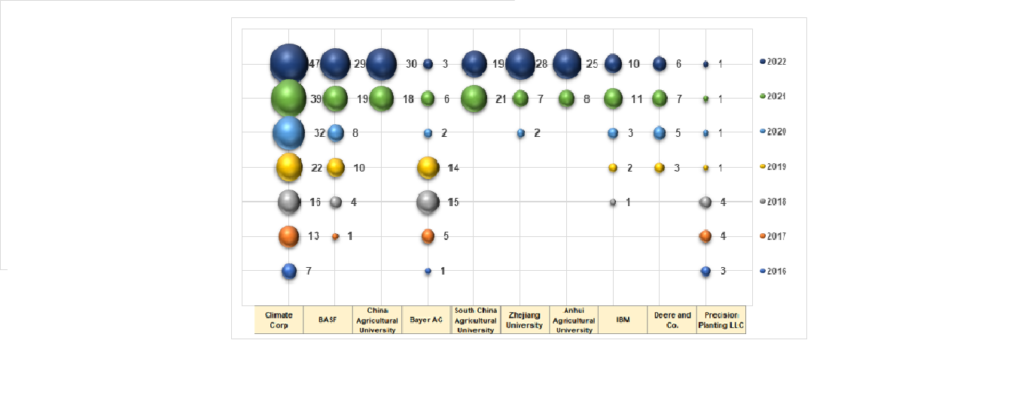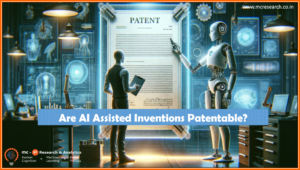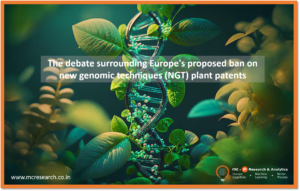Innovation led Transformation in Agriculture
The use of technological innovations in agri-business is transforming the sector to one of the most application-rich environments in terms of the deployment of mobile devices, robotics, drones, satellite imaging, artificial intelligence, sensory devices, Internet of Things, Blockchain, Quantum Computing, Big Data Analytics, 5th and 6th Generation Wireless Technologies and other automated processes.
Data-driven expert systems can thus generate operational information on weather, climate, soil, pests, suitable crop varieties, and harvests, but also on facilitation of trade, transaction values, cross-border regulatory issues, logistics, processing, packaging, and sales of processed products.
Intellectual property rights with Ag-data
The intellectual property rights that are useful to the agri-business have created positions of dominance that are strengthened by ag-data acquisition and processing, and the subsequent ability to package the results in improved products, processes, and services by platform providers.
The impact of these new innovations on the agri-business is measured at 19% for IoT, 17% for robotics, 14% for AI, 13% for drones, 11% for precision agriculture, 6% for big data & analytics, 6% for controlled environment agriculture, 7% for agro-biotech, 4% for regenerative agriculture, and 3% for connectivity technology.
Three main challenges in this domain
-
Unable to keep up with technological improvements, rural smallholder farmers are left behind as mobile networks expand. In the worst cases, the most common barrier is the cost of a smartphone.1
-
We cannot ignore the issue of data colonisation. Large firms collect data from rural farmers voluntarily or inadvertently when farmers are unaware of the potential value of their data. A power imbalance is now present in the data transaction as a result.2
-
Privacy concerns are frequently raised in discussions about fair data. Data protection regulations are still lacking in emerging economies. FAIR protocols ensure that data can be found, accessed, interoperable, and reused. They are, however, insufficient in addressing issues of privacy, consent, and control.3
Every farmer should benefit the most from this digitalization era while keeping in mind their rights, and they should be given opportunity to make fair value distribution a reality.
Filing Trend among Top countries
Key Observations
From 2010, around 3164 applications and 686 grants have been published so far in this particular domain. Considering the last 5 years, there has been a steady increase in patent filings around digitalization in agriculture.
With respect to number of patents filed over the last 6 years, India and USA are almost similar.
Even though Canada has very few patent filings in total, it has started its journey in this space earlier (from 2010) when compared to other leading countries.

Filing Trend among Top players in this domain
Key Observations
Of the traditional firms, the Climate Corporation (Monsanto) and BASF are undertakings with patents in this category, most notably in the field of generation of digital cultivation maps (precision agriculture).
Precision Planting LLC, a US based corporation is comparatively well advanced as it started its innovation journey in 2013. Though picked up pace in the last 2 years, China Universities are filing more patents than others making China the leader in agriculture.

Overview – Key concepts in the technology field
Key Observations
Digital Agriculture majorly covers the use of technological innovations in properties such as prediction and identification of crop diseases, yield, growth and vigor of plants, forecast warning of abiotic stresses, such as low or high temperature, deficient or excessive water, high salinity, heavy metals, and ultraviolet radiations; calculating vegetative index to monitor crop and forest health, the environment, and climatic conditions.

Recent technology driven innovations in Start-up companies
In IoT – Bulgarian start-up Agrila offers modular IoT sensory stations, Canadian Farmer’s Hive offers remote monitoring of farm equipment, crops, and microclimates.
In agricultural robotics – US start-up Advanced Farm offers autonomous harvesting and navigation in fields, and Canadian start-up Nexus Robotics offers a robot that detects and removes weeds from fields. In agricultural robotics – US start-up Advanced Farm offers autonomous harvesting and navigation in fields, and Canadian start-up Nexus Robotics offers a robot that detects and removes weeds from fields.
In artificial intelligence – US start-up Arwa Intelligence offers artificial intelligence to provide customised recommendations for crop planning, and Belgian start-up Ask Attis offers plant disease detection through an app.
In drones – Omani start-up Wakan Tech offers drone solutions for aerial pollination of date palm trees, and Indian start-up Equinox’s Drones offers drone services like crop surveillance, aerial inspection, data processing, and data analysis.
In precision agriculture – Australian start-up Data Farming offers a pay-per-use cloud service providing insights through satellite images, soil mapping, auto-zoning, etc., and Italian start-up Agricolus offers information through deployment of satellites and drones for calculating parameters relating to vigour, water stress, and the quantity of chlorophyll.
In agricultural biotechnology – Canadian start-up AgGene offers seeds and tissues with increased protein content through use of CRISPR and MAD7 gene editing platforms, and Australian start-up XytoVet offers breeding techniques for assigning parentage information on sheep, cattle, and aquaculture enabling livestock decision-making.
In big data and analytics – Indian start-up Fyllo offers cloud services linked to sensory devices installed across the farm to analyse crop needs, irrigation requirements, pests, and diseases, as well as fertiliser schedules for crops based on the analysis of soil data, and Dutch start-up AgriData Innovations offers greenhouse visualisation, collection, and analysis of farm data down to the specific leaf of a crop.
In controlled environment agriculture – US start-up OnePointOne builds vertical plane aeroponics farming spaces equipped with imaging and sensory devices, and Lithuanian start-up Baltic Freya deals with irrigation and nutrients delivery by offering a new and improved fogponics technique.
In connectivity technologies – Australian start-up Ellenex offers connectivity of battery-powered sensors to low-power satellite and WIFI systems, and US start-up AgriLinx offers low-bandwidth solutions for remote locations.
How can MCRPL support customers in this domain?
MCRPL is a 20-year-old company undertaking all prior art searches, including scientific and technical information which has built a resilient team comprising of Masters and PhDs in agriculture domain having in-depth knowledge and expertise required.
Agricultural research is one of our focuses with searches relating to Digital Agriculture focusing on the technologies that are useful to farmers or for agricultural practices such as forecast or warning for agricultural conditions, devices measuring the growth of the plants, innovative seedling techniques, imaging for pest identification, prediction of yield and further giving advice to farmers regarding the amount of pesticides to be sprayed, to provide agricultural advice, starting from data acquisition and leading to delivery of solution proposals to customers/farmers or practical implementation of data evaluation and modelling in agricultural machines or devices to improve farming / growth of crops in the field.
Types of services: Grouping of technology-based projects on a weekly basis for about 5,000 patent records annually under the category of digital agriculture.






